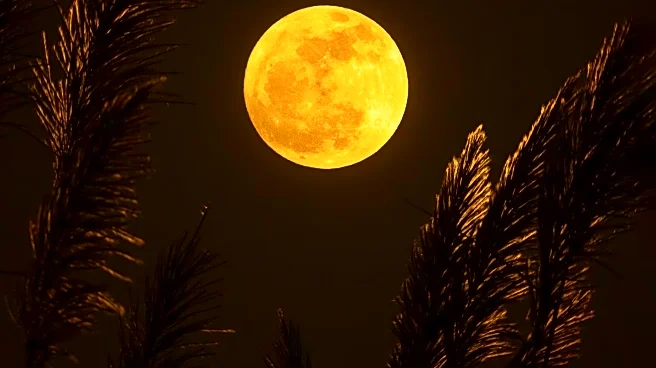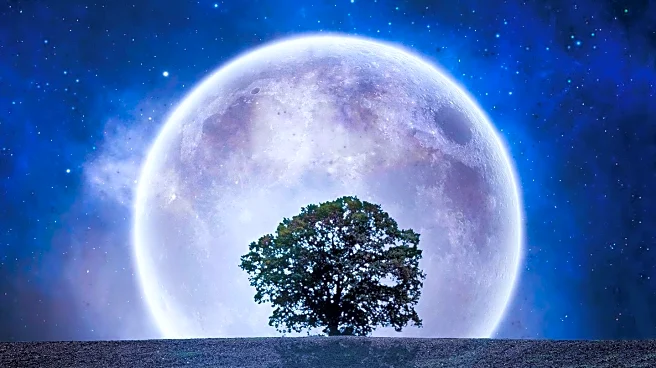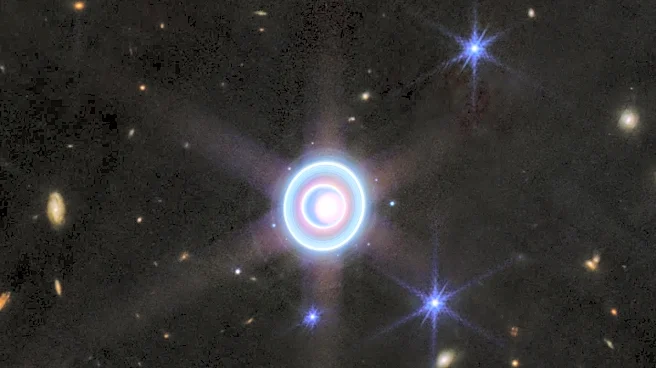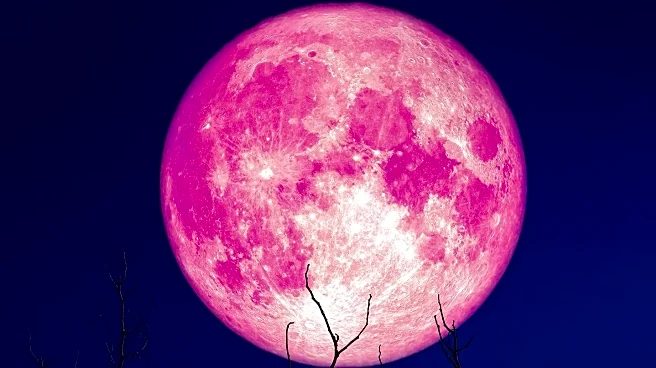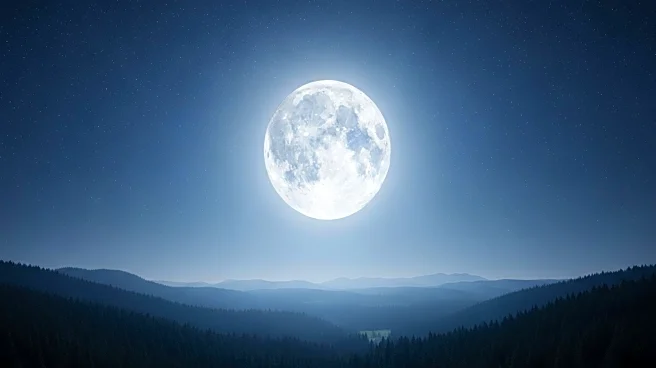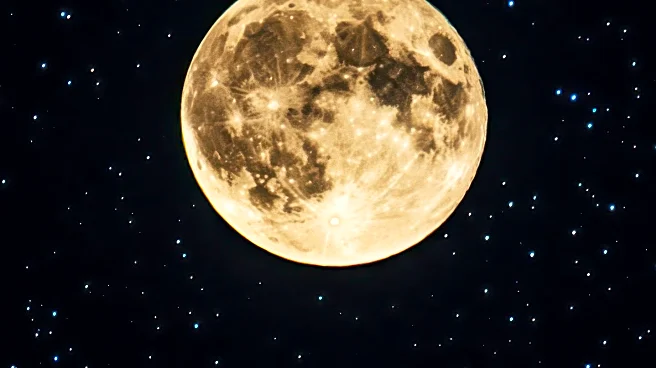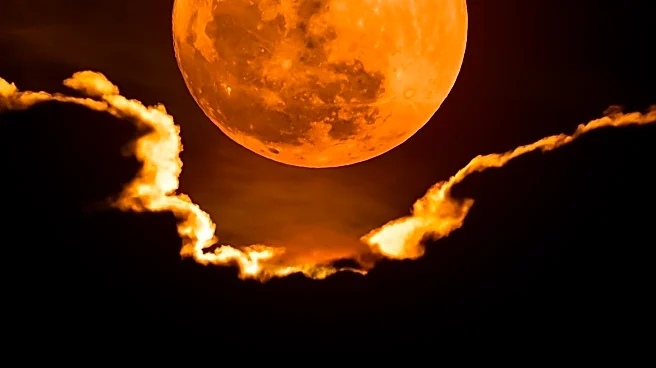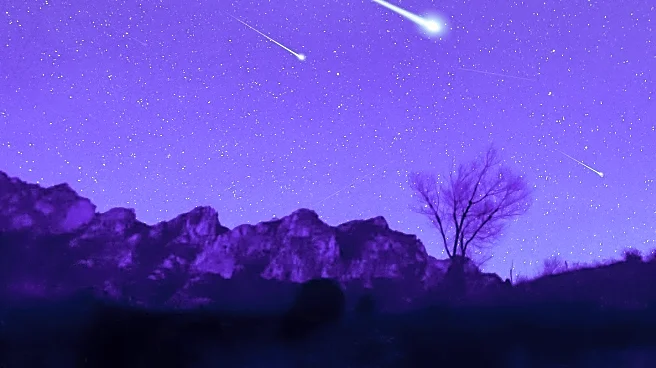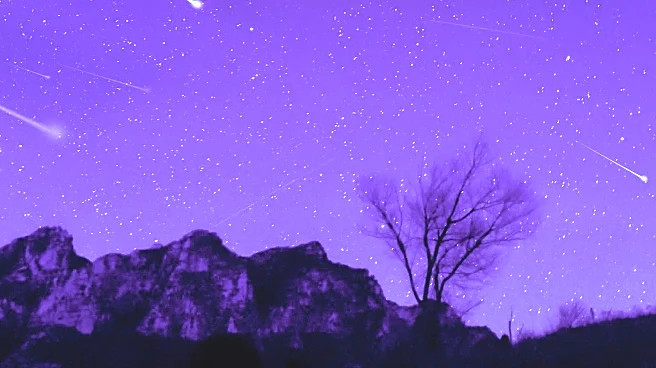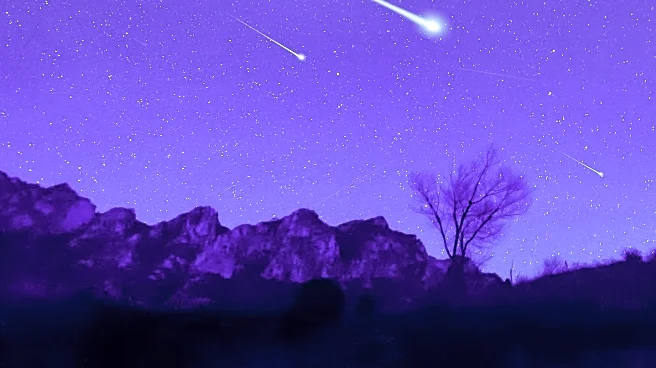What's Happening?
Michigan residents are set to experience the first full supermoon of 2025, known as the harvest moon, which will peak on October 6. This astronomical event occurs two weeks after the autumnal equinox and is characterized by several nights of bright moonlight. The harvest moon is the full moon closest to the autumnal equinox, typically occurring in September or October. This year, it will rise in early October, providing bright moonlight from dusk to dawn. The phenomenon is traditionally significant for farmers, as it allows them to harvest crops later into the night due to the extended moonlight. The harvest moon is the first of three consecutive supermoons in 2025, with subsequent supermoons expected to peak on November 5 and December 4.
Why It's Important?
The occurrence of the harvest moon is significant for both astronomical enthusiasts and agricultural communities. For astronomers and sky watchers, the supermoon offers a unique opportunity to observe the moon's increased brightness and size due to its proximity to Earth. For farmers, the extended moonlight historically provided an advantage in harvesting crops, allowing for longer working hours during the night. This tradition underscores the moon's role in agricultural practices and its impact on rural economies. Additionally, the event draws attention to the natural cycles and celestial phenomena that influence human activities, highlighting the interconnectedness of nature and society.
What's Next?
Following the harvest moon, Michigan residents can anticipate two more supermoons in 2025, with the next one, known as the beaver moon, peaking on November 5. These events will continue to offer opportunities for astronomical observation and cultural celebrations. As the supermoons approach, local communities may organize events or gatherings to celebrate these celestial occurrences. Additionally, the extended moonlight may continue to benefit agricultural activities, although modern farming techniques have reduced reliance on natural light. The anticipation of these supermoons may also inspire educational programs and public interest in astronomy.
Beyond the Headlines
The harvest moon and subsequent supermoons highlight the cultural and historical significance of lunar events. These occurrences have been celebrated in various cultures, often associated with harvest festivals and traditional ceremonies. The moon's influence on tides and natural rhythms also underscores its importance in ecological and environmental studies. As society becomes increasingly urbanized, events like the harvest moon serve as reminders of the natural world and its cycles, encouraging a deeper appreciation for astronomy and the environment.

